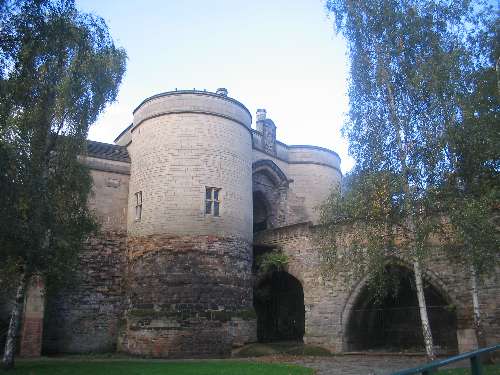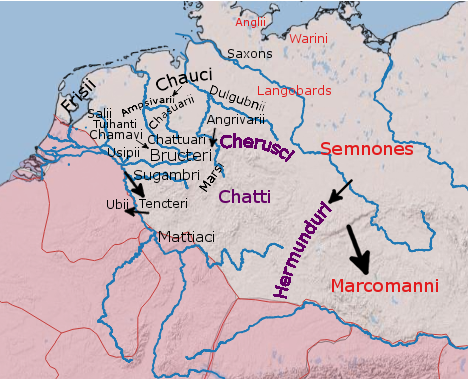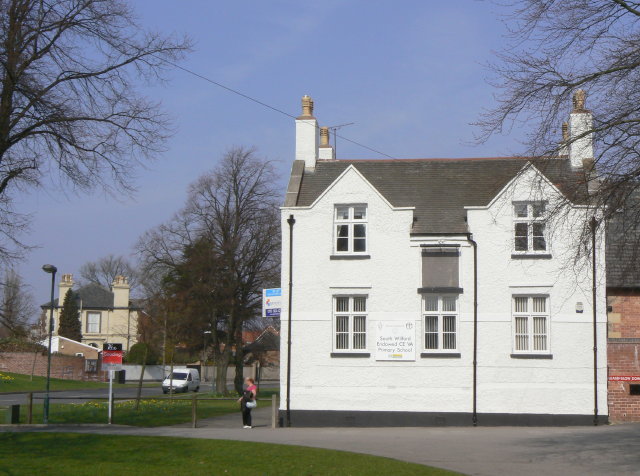|
Snotingas
The Snotingas were an Anglian tribe who either took their name from a chieftain called "Snot" or "Snod", or from the word ''Snottenga'', meaning "caves". The Snotingas occupied the settlement of Snottengaham or Snodengaham (modern Nottingham).John Throsby, "The history and antiquities of the town and county of the town of Nottingham", Burbage and Stretton, Tupman, Wilson, and Sutton, 1795 The Snotingas gave their name to the settlements of Nottingham, first recorded as Snotengaham, and nearby Sneinton, first recorded as ''Snotinton''. Nottingham's St Mary's Church was probably established as a minster as early as the late 7th century, and the extent of its minster parish is likely to represent the original extent of the territory of the Snotingas. Although determining this area is complicated by the large amount of land held by St Mary's granted to Lenton Priory after the Norman Conquest, it certainly included Whiston in the north of the modern city, and probably the areas of ... [...More Info...] [...Related Items...] OR: [Wikipedia] [Google] [Baidu] |
Nottingham
Nottingham ( , locally ) is a city and unitary authority area in Nottinghamshire, East Midlands, England. It is located north-west of London, south-east of Sheffield and north-east of Birmingham. Nottingham has links to the legend of Robin Hood and to the lace-making, bicycle and tobacco industries. The city is also the county town of Nottinghamshire and the settlement was granted its city charter in 1897, as part of Queen Victoria's Diamond Jubilee celebrations. Nottingham is a tourist destination; in 2018, the city received the second-highest number of overnight visitors in the Midlands and the highest number in the East Midlands. In 2020, Nottingham had an estimated population of 330,000. The wider conurbation, which includes many of the city's suburbs, has a population of 768,638. It is the largest urban area in the East Midlands and the second-largest in the Midlands. Its Functional Urban Area, the largest in the East Midlands, has a population of 919,484. The popu ... [...More Info...] [...Related Items...] OR: [Wikipedia] [Google] [Baidu] |
Angles
The Angles ( ang, Ængle, ; la, Angli) were one of the main Germanic peoples who settled in Great Britain in the post-Roman period. They founded several kingdoms of the Heptarchy in Anglo-Saxon England. Their name is the root of the name ''England'' ("land of Ængle"). According to Tacitus, writing around 100 AD, a people known as Angles (Anglii) lived east of the Langobards and Semnones, who lived near the Elbe river. Etymology The name of the Angles may have been first recorded in Latinised form, as ''Anglii'', in the ''Germania'' of Tacitus. It is thought to derive from the name of the area they originally inhabited, the Anglia Peninsula (''Angeln'' in modern German, ''Angel'' in Danish). Multiple theories concerning the etymology of the name have been hypothesised: # According to Gesta Danorum Dan and Angul (Angel) were made rulers by the consent of their people because of their bravery. Dan gave name to Danes and Angel gave names to Angles. # It originated fro ... [...More Info...] [...Related Items...] OR: [Wikipedia] [Google] [Baidu] |
Barton In Fabis
Barton in Fabis is a village and civil parish in the Rushcliffe district of Nottinghamshire. It has a population of about 250, being measured at 266 in the 2011 Census. The village is just south of Nottingham, being on the other side of the River Trent from Attenborough, Nottinghamshire, Attenborough. A ferry, ''Barton Ferry'', used to cross the River Trent to the Attenborough side near to the mouth of the River Erewash. A ferry crossed the River Trent at this point since before 1774. The name originates from an older name, "Barton in the Beans" (Fabis being Latin language, Latin for 'bean', in the ablative plural), apparently referring to the beans grown in the village. This name was also used for a Leicestershire village, Barton in the Beans, which has retained its name.Ekwall, E. (1940), The concise dictionary of English place-names, 2nd ed. Oxford University Press See also *Listed buildings in Barton in Fabis References External links * * Villages in Notting ... [...More Info...] [...Related Items...] OR: [Wikipedia] [Google] [Baidu] |
Wilford
Wilford is a village in the city of Nottingham, Nottinghamshire, England. The village is to the northeast of Clifton, southwest of West Bridgford, northwest of Ruddington and southwest of Nottingham city centre. It is at a meander of the River Trent. History Early settlements Remains of a paved Roman ford, bordered by oak posts, were found in the Trent at Wilford in 1900. The settlement is named as ''Willesforde'' in Domesday Book, owned by William Pevrel of Nottingham Castle, who also owned the lands of nearby Clifton. It had a fishery, a priest and 23 sokemen. The land passed to the Clifton family in the 13th Century. Development Wilford retained its identity as a village until the later 19th century. Surrounded by woodlands and with riverside amenities such as the Wilford Ferry Inn, the village attracted many visitors from Nottingham. Spencer Hall, the Nottinghamshire poet, wrote in 1846 "Who ever saw Wilford without wishing to become an inmate of one of its peac ... [...More Info...] [...Related Items...] OR: [Wikipedia] [Google] [Baidu] |
West Bridgford
West Bridgford is a town and the administrative centre of the Borough of Rushcliffe in the county of Nottinghamshire, England. It lies immediately south of the city of Nottingham, from which the River Trent divides it. Forming part of the Nottingham Urban Area, West Bridgford is a commuter town for the city. The population was estimated at 48,225 in 2018. The town is part of the constituency of Rushcliffe, which is held by Ruth Edwards of the Conservative Party. History Most main roads in central West Bridgford are named after wealthy families that dominated its early history. There are also new developments. The roads in the Gamston development have names from the Lake District, and Compton Acres from Dorset and the Purbeck Coast. At the end of the First World War, the Musters family sold the Trent Bridge Inn and Trent Bridge cricket ground to the county cricket club. The club owned the inn only briefly, then resold it at a profit to a brewery. After pressure, the Mus ... [...More Info...] [...Related Items...] OR: [Wikipedia] [Google] [Baidu] |
Arnold, Nottinghamshire
Arnold () is a market town and unparished area in the Borough of Gedling in the ceremonial county of Nottinghamshire in the East Midlands of England. It is situated to the north-east of Nottingham's city boundary. Arnold has the largest town centre in the Borough of Gedling and the most important town centre in the northeastern part of the conurbation of Greater Nottingham. Gedling Borough Council is headquartered in Arnold. Since 1968 Arnold has had a market, and the town used to have numerous factories associated with the hosiery industry. Nottinghamshire Police have been headquartered in Arnold since 1979. At the time of the 2011 United Kingdom census, Arnold had a population of 37,768. Areas within Arnold include Daybrook, Woodthorpe, Redhill, Warren Hill, Killisick and Dorket Head. Toponymy Arnold was referred to as "Ernehale" in Domesday Book of 1086. This name meant 'place frequented by eagles' or 'the valley of eagles'. ''A History of Arnold'' (1913) by Rev. Rupe ... [...More Info...] [...Related Items...] OR: [Wikipedia] [Google] [Baidu] |
Basford, Nottinghamshire
Basford is a northerly suburb of Nottingham, England, incorporated into the city in 1877. It gave its name to Basford Rural District, which existed from 1894 to 1974. The ward population at the 2011 census was 16,207, estimated at 16,779 in 2019. Next to Old Basford is New Basford, which is mainly Victorian. Basford lies close to the River Leen, a tributary of the River Trent. It is linked to Nottingham City Centre to the south and Hucknall and Bulwell to the north by the Nottingham Express Transit tram service. Toponymy The name appears as ''Baseford'' in the Domesday survey of 1086; Basford contains the Old English personal name ''Basa'', + ''ford'' (Old English), 'a ford', so 'Basa's ford'. History "Basford Parish lies principally in the vale of the Leen, where that river is augmented by two small streams called the Day Brook and White Moor Spring; but its eastern extremity rises to the lofty hills of Mapperley. It extends from one and a half to three miles north of ... [...More Info...] [...Related Items...] OR: [Wikipedia] [Google] [Baidu] |
Radford, Nottingham
Radford is an inner-city area of Nottingham, located just outside the city centre. The appropriate ward of the City of Nottingham Council is called Radford and Park with a population of 21,414. It is bounded on the south by Lenton and Nottingham City Centre, and comprises around of land. History St Peter's Church, Radford was given by William Peveril to Lenton Priory. The church was rebuilt in 1812 at a cost of £2,000. The Wesleyan chapel was built in 1805 and enlarged in 1828. In September 1878 a chapel was built on St Peter's Street by the United Methodist Free Churches at a cost of £1,900. It was closed owing to declining membership and income in June 1947 and purchased by the Evangelical Free Church. Radford Registration District (RD) was created on 1 July 1837 on the introduction of Statutory Registration of Births, Marriages and Deaths (BMD) - and was abolished, and absorbed into Nottingham RD, on 1 July 1880. Population by year *1811 - 5,704 *1821 - 7,348 *1831 ... [...More Info...] [...Related Items...] OR: [Wikipedia] [Google] [Baidu] |
Lenton, Nottingham
Lenton is an area of the City of Nottingham, in the county of Nottinghamshire, England. Most of Lenton is situated in the electoral ward of 'Dunkirk and Lenton', with a small part in 'Wollaton East and Lenton Park'. Originally a separate agricultural village, Lenton became part of the town of Nottingham in 1877, when the town's boundaries were enlarged. Nottingham became a city as part of the Diamond Jubilee celebrations of Queen Victoria in 1897. History The name ''Lenton'' derives from the River Leen, which runs nearby. Lenton and its mills on the Leen get a mention in the Domesday Book in the late 11th century: "In Lentune 4 sochmen and 4 bordars have two ploughs and a mill." Lenton Priory Lenton Priory was founded in the village by William Peverel at the beginning of the 12th century. A Cluniac monastery, the priory was home to mostly French monks until the late 14th-century when it was freed from the control of its French mother-house, Cluny Abbey. From the 13th-centur ... [...More Info...] [...Related Items...] OR: [Wikipedia] [Google] [Baidu] |
Norman Conquest
The Norman Conquest (or the Conquest) was the 11th-century invasion and occupation of England by an army made up of thousands of Norman, Breton, Flemish, and French troops, all led by the Duke of Normandy, later styled William the Conqueror. William's claim to the English throne derived from his familial relationship with the childless Anglo-Saxon king Edward the Confessor, who may have encouraged William's hopes for the throne. Edward died in January 1066 and was succeeded by his brother-in-law Harold Godwinson. The Norwegian king Harald Hardrada invaded northern England in September 1066 and was victorious at the Battle of Fulford on 20 September, but Godwinson's army defeated and killed Hardrada at the Battle of Stamford Bridge on 25 September. Three days later on 28 September, William's invasion force of thousands of men and hundreds of ships landed at Pevensey in Sussex in southern England. Harold marched south to oppose him, leaving a significant portion o ... [...More Info...] [...Related Items...] OR: [Wikipedia] [Google] [Baidu] |
Lenton Priory
Lenton Priory was a Cluniac monastic house in Nottinghamshire, founded by William Peverel ''circa 1102-8''. The priory was granted a large endowment of property in Nottinghamshire and Derbyshire by its founder, which became the cause of violent disagreement following its seizure by the crown and its reassignment to Lichfield Cathedral. The priory was home mostly to French monks until the late 14th century when the priory was freed from the control of its foreign mother-house. From the 13th-century the priory struggled financially and was noted for "its poverty and indebtedness". The priory was dissolved as part of King Henry VIII's Dissolution of the Monasteries. History Foundation The priory was founded by William Peverel ''circa'' 1102-8 in the manor of Lenton, Nottingham, about 1½ miles south-west of the town of Nottingham and was dedicated to the Holy Trinity. The foundation charter states that Peverel founded it "out of love of divine worship and for the good of the souls o ... [...More Info...] [...Related Items...] OR: [Wikipedia] [Google] [Baidu] |





